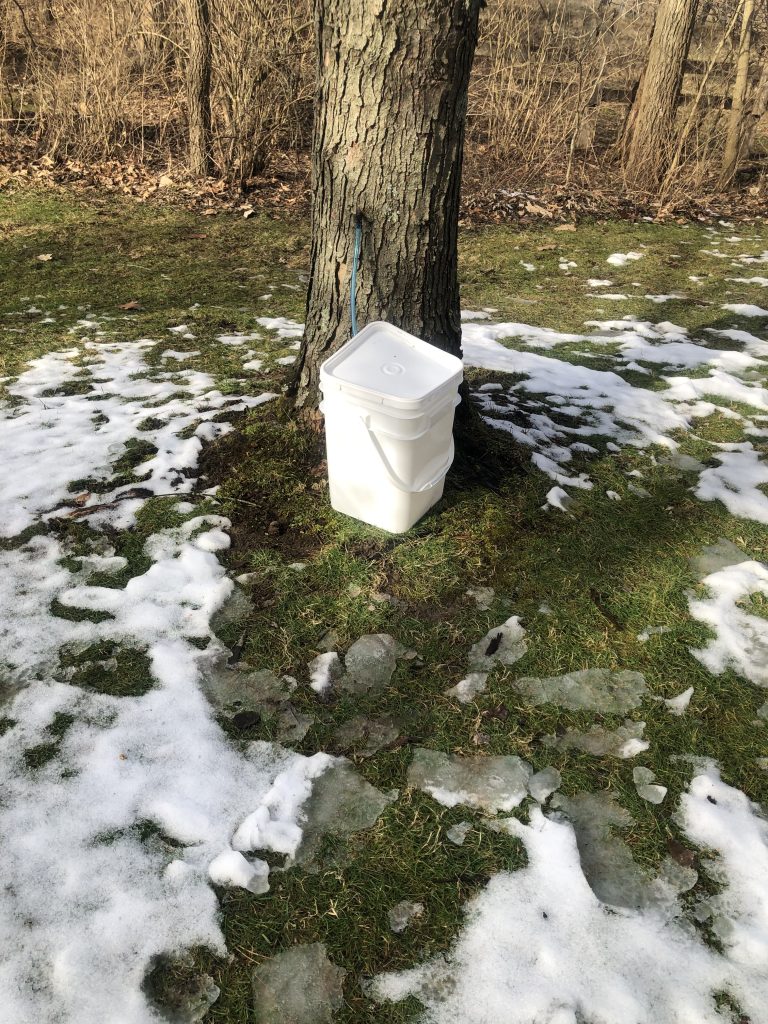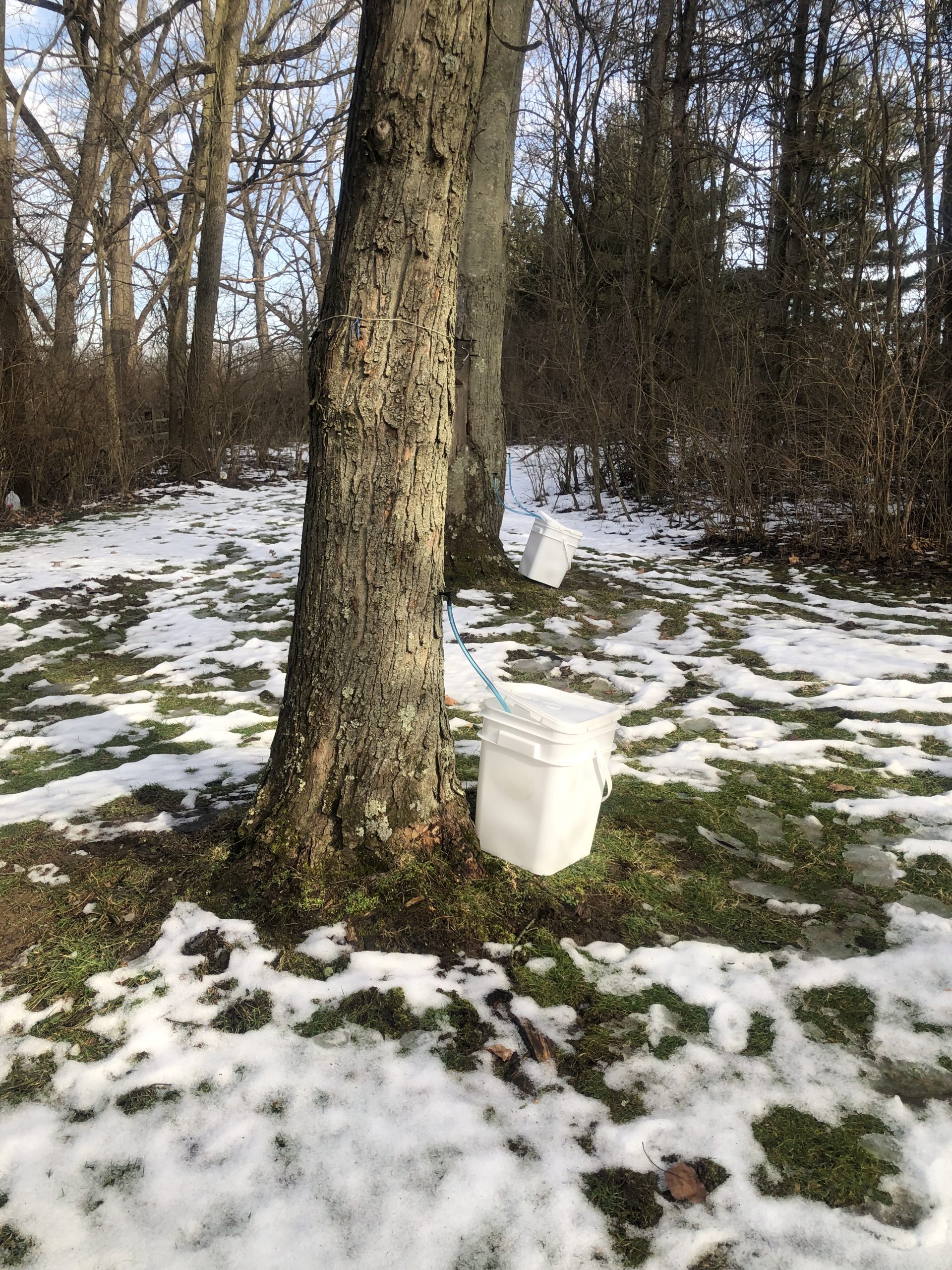We had a huge warm up today following the 8 inches of snow we received over the weekend, the temperature went from 28F (-2C) up to 60F (15C) overnight. The combination of the snow melting over the past couple of days and the temperature swing brought a significant increase in maple sap flow today.

To better understand when to expect a good sap yield, let’s look at how sap moves through the tree.
Trees draw water in from their roots to hydrate themselves. The water combines with minerals, sugars, enzymes, hormones, and amino acids. This combination is called sap. Depending on the time of year and the tree’s needs at the time, the composition of the sap will change. This is why we tap for maple syrup (and other sweet maple products) in the late winter before the trees have had their leaves open.
At this time, the sap has a much higher sugar content that makes it desirable for our sweet treats. The higher sugar content is needed to provide the necessary energy to the branches to form the buds that will turn into leaves once the temperatures are right. Once the buds open, the tree’s energy needs change, so then the sap composition changes and is no longer usable for maple syrup production.
A similar process happens in reverse in the late fall. Some people choose to tap then, but the sugar content is much lower than in the late winter/early spring, so there is a much lower syrup yield. I personally prefer to not risk stressing the trees and let them rest.
So, taking this into consideration – how does snow affect sap flow? When there is snow that slowly melts (vs rain that quickly washes away), it allows the tree to utilize its smaller, shallow roots to also collect water for sap instead of just the deep roots pulling water from the water table deep underground. This leads to greater sap production while the snow is slowly melting if the temperature swings are right.
Temperature swings are important, but it’s not the only temperature related aspect to consider. When the temperature goes from frigidly cold (15F or -9C) to above freezing (32F or 0C), you are likely to see minimal sap production. This is because the sap inside of the tree will freeze when it is bitterly cold so it will take a while for it to thaw and move throughout the tree again. For a visual – take a 5 gallon (19L) bucket mostly full of water and leave it outside on your porch. If the water is frozen solid, don’t expect any sap flow. If it has thawed a little, you will have some sap flow. If there is significant thawing down about 4 inches (10 cm), you can generally expect a very good sap flow.
Not only does the ambient temperature play into the equation, but the amount of sunlight hitting the trunk of the tree plays a role as that will heat that section faster than by ambient temperature alone. Many people prefer to tap on the east side of a tree since that will theoretically receive sunlight earlier to help warm it faster than by ambient temperature alone.
The sunlight factor is also why typically ‘yard’ trees will usually yield more sap than ‘forest’ trees. The forest trees don’t get as much direct sunlight on their trunks so the sap takes longer to thaw and start flowing out of your taps. Anecdotally, I’ve noticed that my yard trees produce significantly more than my forest trees, and this has been the case for the past two years that I’ve been doing this.
With all of this in mind, it makes sense that I’ve had an excellent yield of sap today. I’ll get a break from boiling tomorrow since it won’t drop below freezing tonight so the sap flow will be minimal if at all. Looking at the temperatures over the next week, I’ll hopefully be able to get a few more good days in before the buds start popping and I need to pull the taps for the year!

